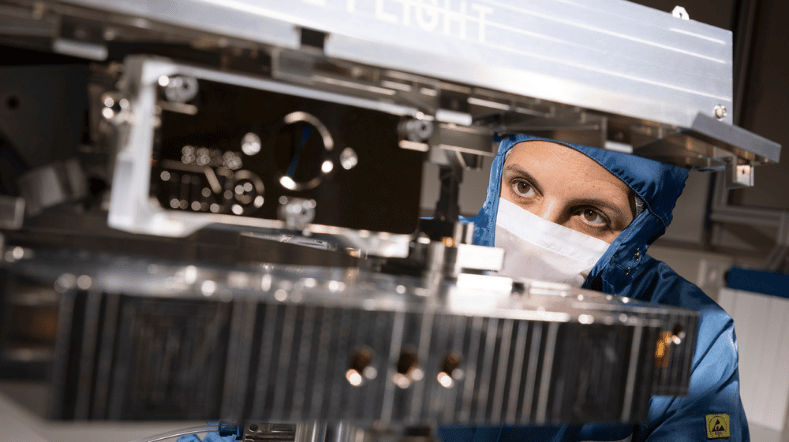
Thermochromic coatings: saving energy through coated windows
It takes a great deal of energy to heat and cool buildings. Applying special coatings to windows enables huge savings. This coating makes use of the Sun’s thermal radiation when heat is needed. It keeps the heat in during winter and out in summer. The switch from one mode to another is fully automatic thanks to the thermochromic coating.
Temperature-based switching
We developed the coating at Brightlands Materials Center. What sets this coating apart from those currently on the market is its much shorter payback time. But the yield is at least as good. Its secret lies in the thermochromic coating, which switches on or off at specific temperatures. Below a certain temperature, the coating admits infrared light, and thus heat. If the temperature rises above a pre-set value, the coating will block any incoming infrared light. This system is cheaper than current electrochromic systems and the glass remains transparent when blocking part of the sunlight.
Less energy and CO2
The fact that the glass does not discolour or darken eliminates a barrier preventing architects from using the system in their designs. And for major renovation projects, the coated glass is an affordable solution for saving energy. Calculations show that it’s possible to save up to 20% of a home’s total energy consumption, or even more. On average, that amounts to an annual saving of more than 600 euros per home. For the Netherlands as a whole, this would cut annual CO2 emissions by 4.5 megatons.
Global market
Many existing ‘smart’ window systems are effective either in hot areas or in cold regions. The thermochromic coating has been designed for temperate climates, which have summers and winters. This makes the product of interest to most of the world. The market for coated float glass, which is worth tens of billions of euros, is growing by around 8% per year. Because the thermochromic coating is cheaper than current coatings, it has great potential.
From lab to prototype
The efficacy of the thermochromic coating has now been proven in the lab. That’s a real breakthrough, as many companies and knowledge institutions have kept getting bogged down because the switching temperatures were too high. The newly developed coating can switch at any desired temperature. For homes, this is between 15 and 25 degrees. The plan is to create a prototype within 2 years that works under real-world conditions. That will pave the way for a market launch.
Interested?
Would you like to invest in the further development of this technology, or perhaps contribute in some other way? If so get in touch and reach out to Rolph Segers.
Get inspired
Trainee in the spotlight Charlot

Trainee in the spotlight Denzil

TNO Privacy policy test drives

HY3+: ensuring security of supply of hydrogen network with neighbouring countries


Annual Report


